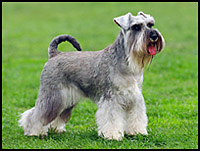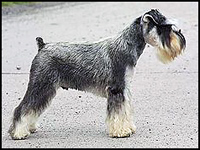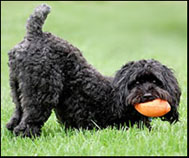|
Tail Docking -Necessary or Needless?History Today it is primarily carried out on purebred or pedigree dogs. There are about 70 breeds of dogs where tail docking is still carried out in North America. In the early days they thought that tail docking would - In England in the early 1700's, a tax had to be paid on working dogs with tails and so many breeds of dogs were docked to avoid paying this tax The tax was repealed in 1796 - but that did not stop the practice of docking dogd' tails. Purebred or Pedigree Dogs Today,unless the dog has a specific medical problem, tail docking is usually done to conform to breed standards laid down by national canine associations like the AKC. (It is called tail docking as the dock is the bony part of the dog's tail) Organizations like the AKC and Kennel Club (UK) maintain the integrity of individual dog breeds by laying down a uniform set of guidelines on how a particular breed should look and behave. These are called Breed Standards. All registered purebred or pedigree dogs should conform to these standards. It is thought that certain breeds, such as Schnauzers, look better without their tails as this emphasizes their striking square look.
However, opinions around the world are changing. In Continental Europe it is common to leave dogs with natural tails rather than to dock tails. In the UK it has been illegal since April 2007 to dock a dog's tail, with the exception of registered working gundogs. You now have the unusual sight in the UK show ring of purebred dogs born pre-April 2007 competing with docked tails against younger dogs with long tails. Must make judging difficult! Working Dogs While the docking of dogs' tails is now largely cosmetic, the exception are hunting and herding dogs. Working dogs have their tails docked for the following reasons - Crossbreeds One topic which keeps cropping up is Schnoodle tail docking. We are often asked "Should Schnoodles have docked tails?"
The Schnoodle is not a hunting dog so the tail would be docked for cosmetic reasons. This seems fairly pointless, as the Schnoodle is not a purebred or pedigree. It therefore does not have to conform to breed standards. Most dogs have their tails docked at 1 to 4 days old. If you are able to find a breeder BEFORE the pups are born, we suggest you ask for the tail to be left au naturel - as Nature intended. COMMENTS What do YOU think about dog tail docking? Do long tails spoil the sharp looks of Schnauzers and other purebred dogs? What about Schnoodles? Let us know your opinion and we'll publish a page with your responses. Just fill in the Contact Form below and send it to Max (who is 4 years old and HAS a docked tail, but would have held on to it if he'd been asked...!) Here are links to comments received - The Anti-Docking Alliance (UK) tells us what the Swedish study into dog tail docking revealed....
Elizabeth Lewis-Cracknell from Saxmundham, England, has to say about the docked tail.... Do you agree or disagree? Have your say here - |
AVAILABLE ON AMAZON AS PRINTED BOOK AND KINDLE! The definitive manual for owners of Miniature Schnauzers, Giants and Standard Schnauzers

"The Schnauzer Handbook is brilliant and covers almost all you want to know about the breed," Michele L, Bournemouth
"A thoroughly interesting and entertaining book. There’s hardly anything about schnauzers that isn’t in here - it even made me smile!" J. Garrard, Ormond Beach, Florida







